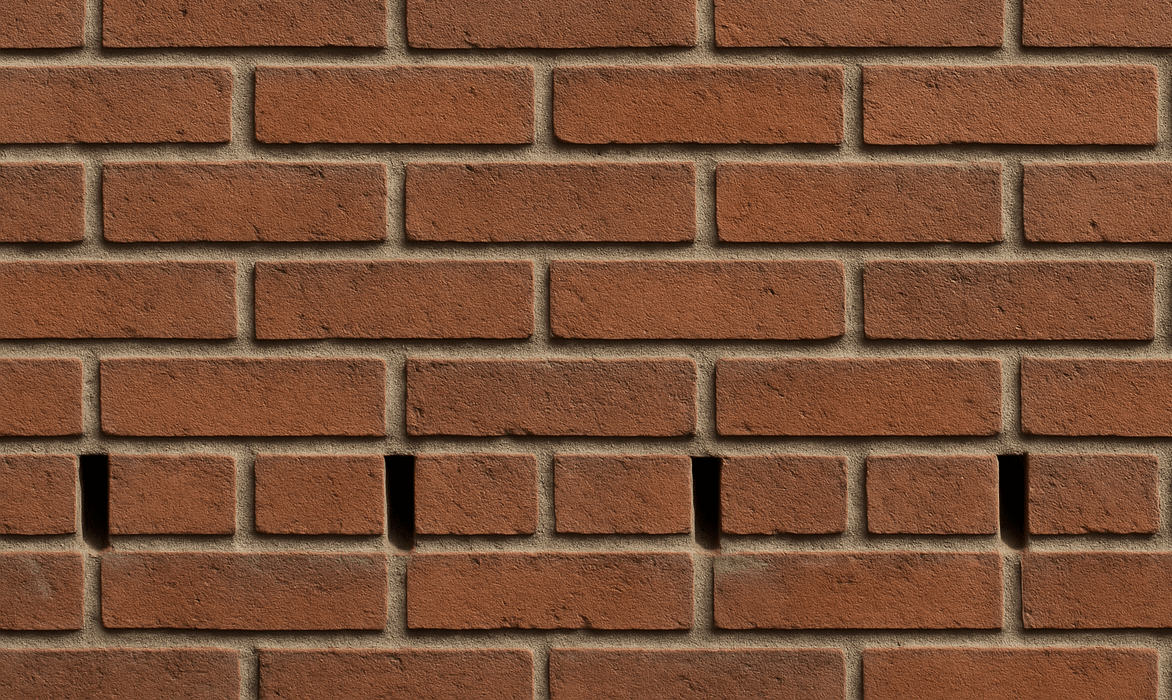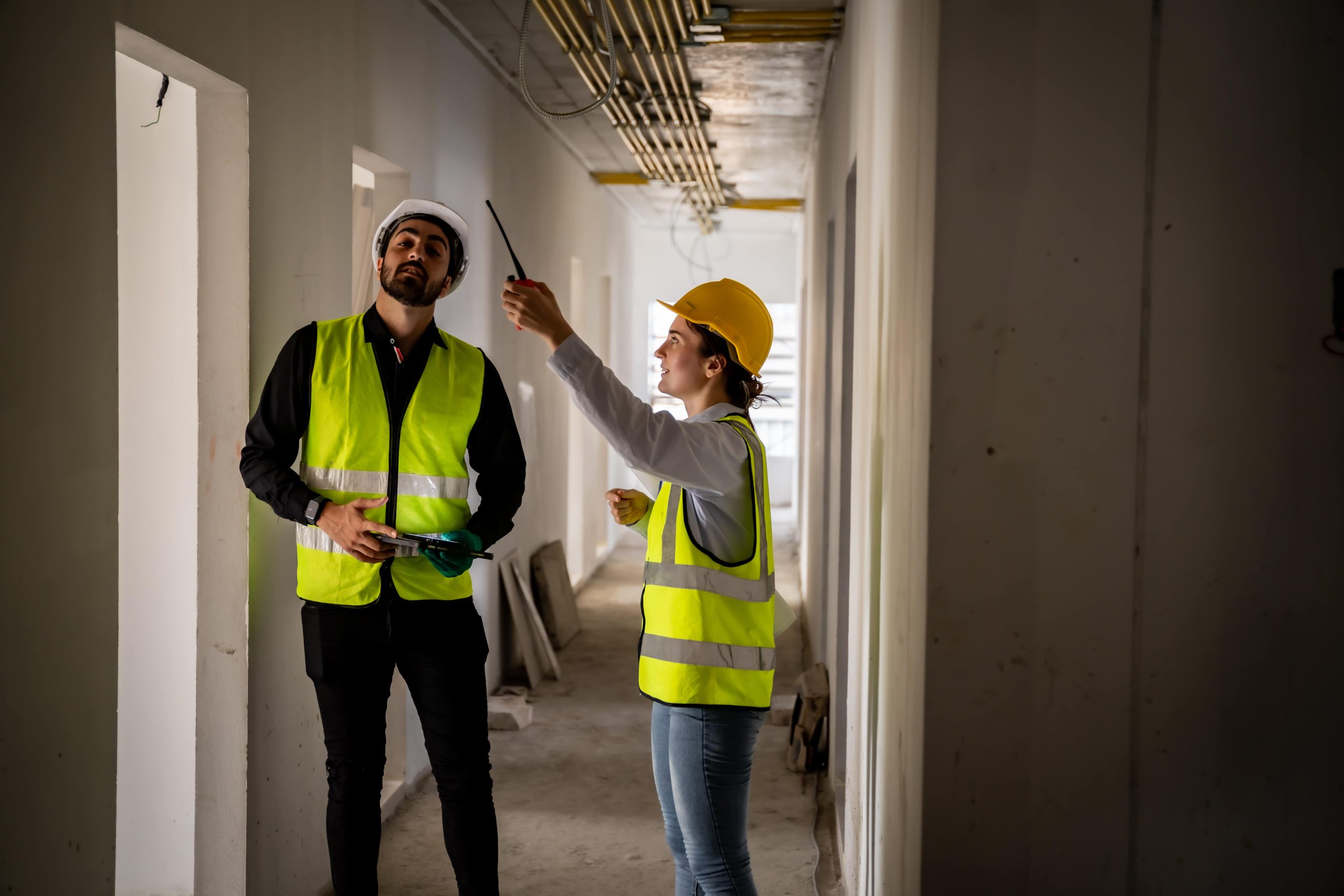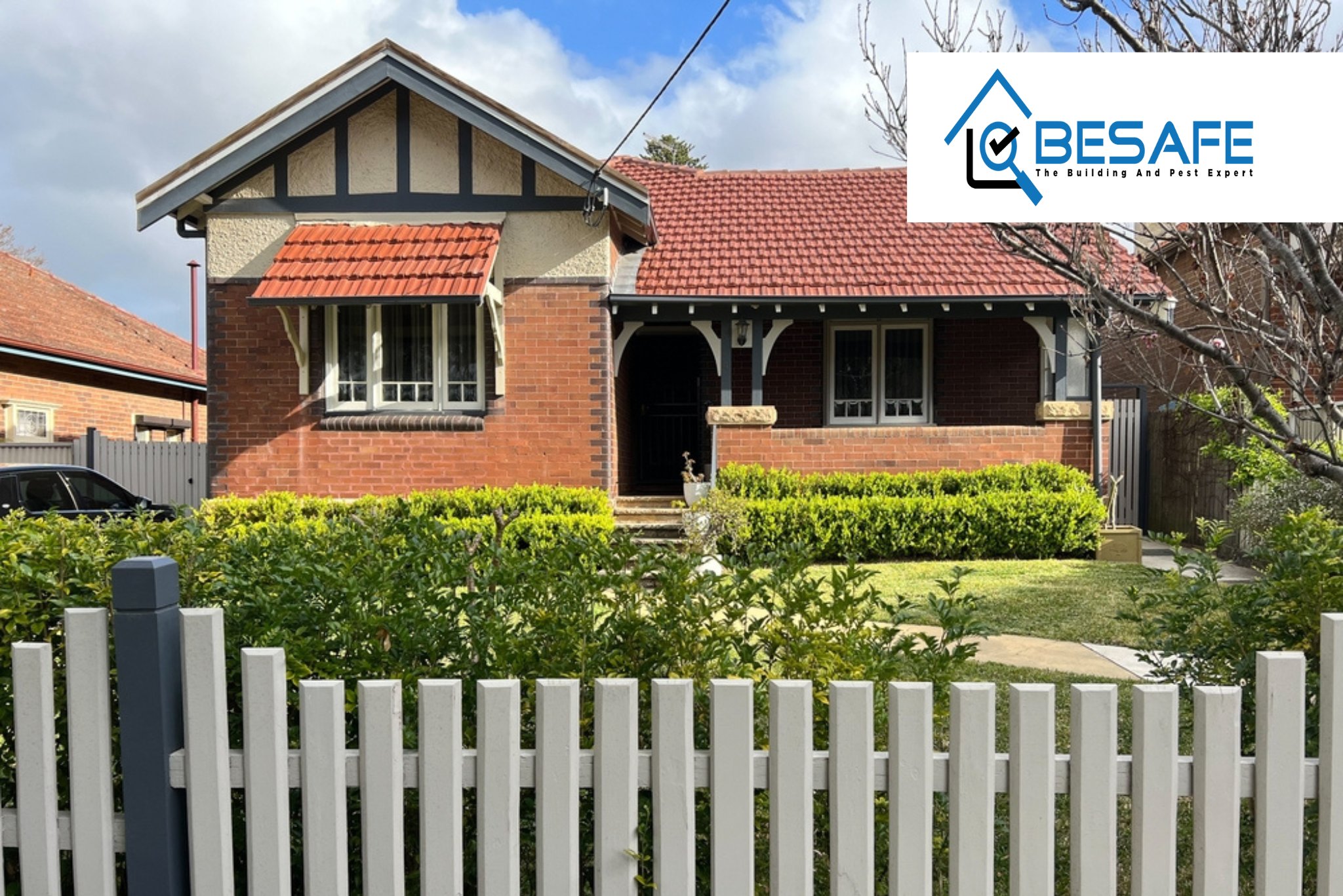
What are Weep Holes in Brickwork? Why Pre-Purchase Building Inspections Are Important
When purchasing a property, it’s natural to focus on the bigger picture, location, price, and visible features. And while these are essential factors to consider, the structural integrity of a home can often depend on smaller details that are easy to overlook. One of the most commonly missed, yet critically important, is weep holes.
These small openings in brickwork may appear minor, but they serve two essential purposes: ventilation and drainage. Without them, moisture becomes trapped within the walls, leading to issues such as mould, mildew, dry rot, and in severe cases, structural deterioration, often referred to as “leaky building syndrome.”
At BeSafe Property Inspections, we have seen firsthand how neglected or poorly constructed weep holes can result in costly repairs for unsuspecting homeowners. In this article, we’ll explain what weep holes are, why they matter, and how a thorough pre-purchase building inspection can help identify potential risks before they escalate.
Key Takeaways
- Weep holes are mandatory drainage openings in brick walls that prevent moisture buildup, with Australian Standards requiring placement every 1200mm and a minimum 75mm ground clearance.
- Blocked or missing weep holes cause expensive damage, including mould growth, timber rot, termite infestation, and structural compromise that costs Australians millions annually.
- Common problems include landscaping obstruction from garden beds, concrete paths, and stored items that block drainage, plus pest entry through improperly maintained openings.
- Professional pre-purchase inspections are crucial as licenced inspectors use specialised tools to identify weep hole compliance issues that untrained buyers typically miss.
- Proper maintenance protects property value since non-compliant weep holes can void insurance claims and significantly reduce resale value while compromising structural integrity.

What are Weepholes in Brickwork?
Small gaps in the mortar joints of a brick wall are often mistaken for construction flaws, but these openings, known as weep holes, are deliberately engineered features designed to protect a home from moisture damage.
Bricks, while appearing solid and durable, are not waterproof. Both bricks and mortar are porous, naturally absorbing and retaining water, particularly during heavy rainfall. Without a way for moisture to escape, serious issues can develop inside walls, including:
- Rotting timber frames and wall studs
- Corrosion of metal components
- Hidden mould and mildew growth
- Reduced thermal efficiency
- Compromised foundations
- Increased risk of termite infestation
Weep holes mitigate these risks in two important ways:
- Ventilation: They allow airflow within wall cavities, enabling trapped moisture to dry out. Without it, prolonged dampness creates ideal conditions for mould, mildew, and timber pests.
- Drainage: In areas with high rainfall or humidity, water can penetrate wall cavities during storms or periods of heavy condensation. Weep holes provide exit points for water that penetrates the brickwork, preventing moisture build-up inside the walls.
Where Weep Holes are Found
Weep holes are typically found in several key locations within a brick structure. They are most commonly located at the base of exterior brick walls, just above the foundation, where water is most likely to accumulate and require drainage. Additionally, they are placed above flashing in windows, doors, and cavity walls as well as along the top of lintels or other openings.
To identify them, look for consistent gaps in the mortar joints, check for patterns that repeat at regular intervals, observe any small vents along the wall, and consult building plans (if available) to confirm their placement.
Australian Standards for Weep Holes
Weep holes are required under Australian Standards to ensure residential buildings remain safe and structurally sound. Key requirements include:
- AS 3700-2018 (Masonry Structures): Weep holes must be positioned above flashing and no more than 1200 mm apart. Openings should measure at least 50 mm in height and align with vertical mortar joints.
- Minimum Clearance: At least 75 mm above ground level (50–75 mm for paved surfaces with proper drainage).
- AS/NZS 2699.1: Ensures that flashing and wall ties are correctly integrated with weep holes for effective moisture management.
- AS 3959-2018 (Bushfire Areas): In bushfire-prone regions, weep holes must be fitted with protective ember guards that allow drainage while preventing ember intrusion.
 |
 |
Why Professional Inspectors Focus On Weep Hole Assessment
With stricter building regulations and a stronger focus on masonry and weatherproofing compliance, assessing weep holes has become more important than ever. What might have passed inspection years ago now needs closer scrutiny, and buyers need to understand how this can affect their investment.
Now, professional building inspectors consider weep holes a key part of any property assessment. While these small openings might seem minor, years of inspecting homes have shown that problems with weep holes often point to bigger issues within a property. Inspectors check that weep holes are correctly placed, they meet minimum height and spacing requirements and are free from obstruction.
6 Common Weep Hole Problems That Shouldn’t Be Ignored
During professional property inspections, it’s common to find issues with weep holes that many buyers miss at first glance. While these problems may seem minor, they often indicate more serious underlying conditions that require prompt attention.
- Blocked Drainage from Landscaping or Construction: Mulch, stones, garden beds, concrete paths, or driveways can block weep holes, stopping water from escaping and allowing moisture to build up inside walls. Even external fixtures like air conditioning units or hot water systems can interfere with drainage if positioned too close.
- Pest Access: Open or unprotected weep holes provide easy entry for termites, rodents, wasps, and other pests. Holes positioned too close to the ground (less than 75 mm) are particularly vulnerable, and signs like termite mud or nests around openings often indicate an infestation.
- Moisture Damage: Blocked weep holes can lead to water stains, white salt deposits on bricks (efflorescence), peeling paint, musty odours, and damp subfloors. Over time, this trapped moisture can cause timber decay, structural problems, and even mould growth.
- Bushfire Safety Risks: In bushfire-prone areas, unprotected weep holes can let embers into walls, creating a serious fire hazard. Australian standards AS3959:2018 require protective screens to prevent ember entry while still allowing water drainage and ventilation.
- Moisture Damage: Blocked weep holes cause trapped water, leading to visible signs such as efflorescence, water stains, peeling paint, musty odours, and mould growth. Over time, moisture can damage timber frames, subfloors, and walls, potentially undermining the home’s structure.
- Health and Structural Hazards: Trapped moisture fosters mould and fungal growth, posing health risks and accelerating timber decay. Combined with pest access, blocked or poorly positioned weep holes can lead to costly repairs and compromised safety.
How We Spot the Warning Signs
Inspectors combine thorough visual assessments with tools like moisture meters to detect hidden issues before they escalate. Early identification ensures that homeowners or buyers can address problems proactively, protecting both property value and structural integrity.
- Water Stains or Discolouration: Stains on exterior walls near weep holes often signal water pooling behind cladding.
- Efflorescence: White salt deposits on brickwork indicate serious moisture accumulation.
- Mould or Mildew: Trapped moisture creates ideal conditions for mould growth on walls, ceilings, or around the weep holes.
- Deterioration: Cracking, peeling, or splintering of masonry or timber near weep holes may point to chronic water problems.
- Visible Obstructions: Inspectors check for blockages such as dirt, leaves, or debris that prevent proper drainage.
- Pest Activity: Signs of insects, rodents, or termite mud tracking around weep holes indicate active infestations.
- Abnormal Noises: Dripping or water sounds can reveal hidden blockages within wall cavities.
- Unpleasant Odours: Musty or damp smells often indicate mould growth from trapped moisture.

What’s Your Next Step?
Weep holes may seem like minor details, but their role in protecting a home’s structural integrity, health, and financial value cannot be overstated. Properties with blocked, missing, or non-compliant weep holes risk moisture damage, pest infestations, and reduced market value, and insurance claims may be affected if regulations are not met.
At BeSafe Property Inspections, thorough building and pest inspections include careful assessment of weep hole placement, spacing, clearance, and functionality. Our inspectors identify warning signs such as water stains, efflorescence, pest activity, and moisture buildup.
By addressing these small but critical features before purchase, buyers can prevent costly repairs, protect their investment, and ensure their new home is safe, healthy, and compliant. Don’t let minor details become major problems, schedule a professional inspection today and make your property purchase with confidence.
Featured news articles

Dilapidation Reports: What They Are and Why Property Owners Need Them
Learn what a dilapidation report is, why it’s essential before construction or demolition, and how it protects property owners from damage claims and disputes.

What are Weep Holes in Brickwork? Why Pre-Purchase Building Inspections Are Important
Learn what weep holes are, why they are vital for your home’s structural integrity, and how professional property inspections can prevent costly moisture and pest damage.

What is a Strata Report? Your Essential Guide Before Buying Property
Discover what a strata report is and why it’s crucial before buying a strata-titled property. Learn how it reveals financial, legal, and management insights to protect your investment.

How To Spot Drainage Problems: 9 Warning Signs To Look For Before Making A Purchase
Discover the 9 most common drainage issues to spot before purchasing a property. Protect your investment, learn expert tips to avoid costly repairs. Read now!

Top 7 Building Defects Found in New Sydney Properties: How to Spot Them
New doesn’t always mean defect-free. In Sydney’s booming property market, construction issues are more common than many buyers realise. From waterproofing failures to structural cracks, this guide breaks down the 7 most frequent defects found in new builds, and how to detect them before they escalate.

Pre-Purchase Building Inspection vs Pest Inspection: What You Need To Know
Buying property? Learn the key differences between pre-purchase building inspections and pest inspections, and why relying on just one could leave you exposed. Learn how these two essential inspections work together to give you a complete picture of a property’s condition, uncover hidden risks, and help you make a confident, informed investment decision.

Ultimate Personal Property Inspection Checklist Before Booking an Inspection
Discover why having a personal property inspection checklist is essential before booking a professional inspection. Taking the time to walk through a property with your own checklist allows you to identify areas of concern, prioritise your questions, and ensure nothing is overlooked. While it won’t replace the expertise of a licensed inspector, it empowers you to approach the inspection process with greater clarity and confidence.

First-Time Buyer’s Guide to Property Inspections in Sydney
Purchasing your first home in Sydney? Don’t skip the property inspection. This comprehensive guide provides key insights into what to expect during an inspection, common issues to be aware of, and how a professional assessment can protect your investment and save you money in the future.

The Impact of Sydney’s Building Boom on Inspection Standards
Sydney’s building boom is fueling rapid development, but it’s also raising concerns about the integrity of both NSW building standards and inspection quality. As construction accelerates, reports of defects are on the rise, raising concerns about the long-term integrity of new properties. With increasing pressure on the construction industry, learn how this affects inspection standards and what it means for property buyers.

How Much Does A Building Inspection Cost In Sydney?
A building inspection is an essential step in the Sydney property purchasing process, providing buyers with critical insights into potential structural issues and hidden defects. Inspection costs vary based on property size, type, and additional services required. This guide offers a comprehensive overview of building inspection pricing, key cost factors, and strategies to ensure purchasers receive the best value for their investment.

Should You Be Present at a Building & Pest Inspection? What You Need To Know
When you’re in the process of buying a property, a building and pest inspection is a crucial step in making sure you’re making a sound investment. However, one common question is whether it is necessary to attend the inspection in person. While it may seem convenient to forgo being present, attending the inspection offers valuable opportunities to gain insights directly from the expert.

What Is An Unsatisfactory Building Inspection?
An unsatisfactory building inspection can uncover hidden issues that may impact your property purchase. From structural concerns to plumbing and electrical problems, understanding what these findings mean and how to handle them is crucial.

Signs It’s Time To Walk Away From A Property
Investing in a property is exciting, but hidden building faults, pest damage, and financial red flags can all indicate it’s time to reconsider your choice. Understanding these crucial warning signs can help protect your investment and ensure you find a home that meets your needs

How To Find The Right Building Inspector
Discover essential tips for finding the right building inspector in Australia. Learn what to look for, questions to ask, and how to ensure you choose a qualified professional for your property inspection needs.

What Does a Building and Pest Inspection Cover?
A building and pest inspection is vital for any property transaction. This guide covers what these inspections include, from structural assessments to pest detection, and explains why they’re essential for safeguarding your investment. Learn about the advantages of professional inspections and find out how BeSafe Inspections can help ensure your property is in top condition.

Introducing our new strata inspector
BeSafe’s Strata Inspector Tina has joined the team to help us expand our capacity for delivering strata reports to unit and apartment buyers in Sydney.

Why Sydney homebuyers need independent property inspection reports
Property inspection reports are essential for Sydney buyers who want to ensure they get exactly what they are paying for.

Before you buy: Is your new house hiding leaks?
If you’re looking to buy a home in Sydney, a pre-purchase building inspection is vital to detect household leaks and rising damp.

Common Defects Found In Buildings
If you’re in the process of purchasing a new property, it can be daunting to consider the repairs it may need. Discover the most common building defects, their causes, and how to address them effectively to make informed decisions and protect your investment.

Building Inspections
Looking to purchase a property but wondering if you actually really need a building inspection

The Cause Of Wall Cracks
Understanding the cause requires consideration of a large number of factors

Cracks in Buildings
The sight of cracking can set off alarm bells in anyone considering purchasing a property


